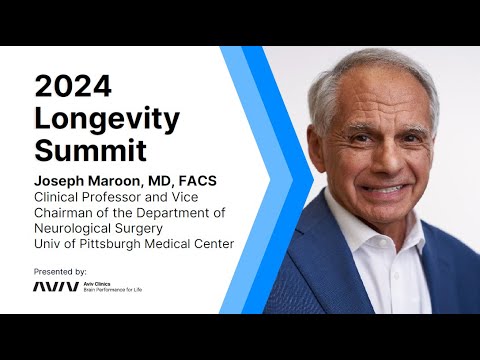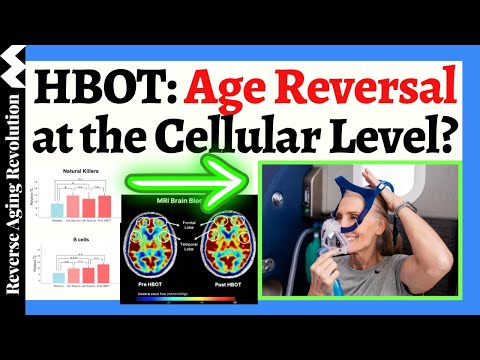Is anyone interested in hyperbaric Oxygen Therapy?
This article in the Times caught my eye
What is interesting about this is that HIF 1 alpha is stimulated by a reduction in the partial pressure of Oxygen. This can be done without hyperbaric pressures.
Reading the article it is clear he has not studied the research. It is the change in partial pressure that creates the stimulation of the HIF pathway not the static state.
I can’t read the original article as it is behind paywall.
But found this. Husband was joking yesterday if I found out the telomere lengthening yet ![]()
Unfortunately, the hyperbaric therapy isn’t proven to increase telomere length. The headline of that study is misleading and the results were hyped up as I commented on in other threads on this:
Has anyone tried this? I saw Dave Asprey HYPING it. The reviews from local offerings seem to be they feel great the day of the therapy and have the best sleep that night. But then they return in a week for another “dive” (as they call it). I might try it for the sleep.
Dave Asprey is a scammer and salesman. You should not listen to him when it comes to advice on health. Sure, it can make some people feel a bit good on the days they use it, and some might even experienced improved sleep, but that doesn’t mean it’s good for you. Just because something feels good doesn’t make it good. Claims that it feels good are sales tactics. If HBOT were actually improving your health and lengthening your telomeres you wouldn’t feel that effect. Note that the increased oxygen pressure from the therapy can be beneficial for certain indications but it’s also harmful in many ways. Similarly, this harm is not something you feel.
Btw not that it matters much, but I have tried HBOT myself not long ago to see if it helped fix a chronic condition. I can’t say I noticed anything from doing it. Then again that’s neither an indication of lack of effects, whether positive or negative.
Stimulating HIF 1 alpha is, however, thought to have merits from a longetivty/healthspan perspective.
I do not understand this. However, when I do Wim Hof breathing with a Pulse Oximeter, I think I am probably in hypoxia for a very short time. I have had my O2 level at 40 when doing this.
I bought Dave’s first book and followed him for awhile. Early he had an older gentlemen that told him how he should do his podcasts. It was basic advice on talking less and showing some humility. After watching that I became so aware of what a pompous A Dave was and everything was about him. As near as I can tell he was kicked out of his own company Bulletproof and prohibited from using any reference to the company and its name. I think this was after the Feds dinged the company on many violations of supplement productions. Someone who ordered his Danger Coffee told me the label said it was made at an address in Kent WA. So one would expect a shiny facility to meet all his rigid standards he talked about. I went to the address and it is just a warehouse. There was no sign of coffee activity. I suspect the area has a small coffee roaster and some guy roasts it at some temp and time settings, bags it and sends it off. Or perhaps Dave flies down from Canada to roast enough to keep up with small demand.
If you mean SPO2 then you may be right. I would not myself like to take my oxygen saturation below 90% and the partial pressure of oxygen links mainly to the oxygen dissolved in blood(water). However, that does not mean that such an intervention necessarily cannot cause HIF 1 alpha to be activated.
I do not know much about any of this. I put a pulse oximeter on my finger for whatever that measures.
Interesting. I certainly have done so; I’ve seen 70% on a finger monitor. CO2 tolerance training involves breathholds while exercising. It is very unpleasant. I understood that normal people (not deep sea divers, etc) could not hold their breath long enough to cause injury. This scientific American article is 10 years old but is interesting. I’m going to do an interview with Brian Mackenzie soon on this topic.
Here is an interesting recent talk about a neurologist’s N=1 experiment with HBOT. He did a lot of pre-testing and post-testing and the results were quite positive. The issue is how long do the results last for, and the cost-effectiveness (cost vs results).
Here is the video queued up for the specific part where he talks about his HBOT experiment.
Joe Maroon, MD, FACS, is a clinical professor and Vice Chairman of the Department of Neurological Surgery at the University of Pittsburgh Medical Center. He is also the consultant neurosurgeon for the Pittsburgh Steelers and WWE and Vice President of the American Academy of Anti-Aging Medicine.
Dr. Maroon joined Dr. Amir Hadanny, Dr. Eric Verdin, Dr. Michael Roizen and Dr. Nir Barzilai for the 2024 Global Aging Consortium Longevity Summit in The Villages, FL.
Dr. Maroon shares details on the mind-body connection, the impact of stress on physical and mental health, and his personal healthy aging journey and transformation into a senior triathlete.
I will listen to this later. I am doing a presentation to the hacking aging group next Saturday on HIF. HBOT IMO is more about HIF than actual high oxygen. The issue of oxygen toxicity is one to be aware of and avoid.
I can provide the link to next Saturday’s presentation (they are also looking at long lived sea creatures - IMO this is also an oxygen issue ( again actual hypoxia rather than hyperoxia).
Thanks. HBOT is an interesting technology that is non invasive and in particular non chemical based so it can be added to a health and longevity stack easily. According to Scott Sherr MD (a guest on WiseAthletes), HBOT has uses for chronic (e.g., inflammation) and acute (e.g., concussion) issues.
Home HBOT chambers are available but have some functional limits.
Here’s a bit from a related paper on the paradox of oxygen. Link to paper at bottom.
2. The oxygen paradox in aging
There is a paradoxical relationship between oxygen and aging. Despite the indispensable role that oxygen plays in tissue homeostasis and organismal survival, oxygen is considered a key driver of the aging process as well. Before we discuss the therapeutic mechanisms of HBOT in aging intervention, it is necessary to delve into the delicate balance of protection versus damage by oxygen in living organisms.
Oxygen serves as a source of reactive oxygen species (ROS). Though ROS can be beneficial in some circumstances, overproduction of ROS is able to induce cumulative macromolecular oxidative damage including lipid peroxidation, protein dysfunction and DNA damage [6,7], all of which contribute to aging. Hence, it is not surprising that hypoxic conditions can ameliorate multiple hallmarks of aging in cell culture, including senescence-associated secretory phenotype (SASP) production, mitochondrial dysfunction and replicative senescence [[8], [9], [10]]. However, while it is often inappropriately assumed that the rate of aging and oxygen levels are directly proportional, the biological consequences of aging with respect to oxygen levels are actually complex and remain poorly understood. As demonstrated in Drosophila, there is a non-linear response of oxidative damage and lifespan to atmospheric oxygen levels [11]. Both extreme high and low atmospheric oxygen levels lead to increased oxidative stress and reduced longevity. On the other hand, a reduction in oxidative stress has been attributed to both increases and decreases in oxygen levels [12,13]. In another word, the truth is not a duality when it comes to the trade-off between hypoxia and hyperoxia (Fig. 2), especially when issues such as free radicals, oxidative stress and scavengers are involved [14,15]. There is actually a biphasic response induced by HBOT: although the accumulation of ROS does exist, the subsequent cytoprotective antioxidant responses tend to be more pronounced after repeated exposures, which is discussed in detail in Section 3.3. In fact, it has been already reported that systemic levels of oxidative stress are largely unaltered in healthy young volunteers after multiple HBOT sessions, with signs of depletion of ROS generation capacity [16]. Likewise, a recent study of HBOT in middle-aged males reported attenuation of oxidative stress, as reflected by circulating biomarkers [17]. These encouraging findings help alleviate concerns that HBOT results in oxidative damage. More importantly, fluctuations in oxygen concentration levels are perceived by tissues as a hypoxia trigger, allowing HBOT over several cycles to stimulate cellular protection characterized by hypoxia-inducible factor-1 (HIF-1) activation without additional detrimental effects of hypoxia [18,19]. We will discuss this problem further in Section 3.1 and Section 3.3.
https://www.sciencedirect.com/science/article/pii/S2213231722001240
I listened to the video. He appears to be talking about the effects of HIF without recognising that it is the reduction in partial pressure back to normoxia that causes HIF to be stimulated.
In this trial, hyperbaric oxygen therapy (HBOT) was used over 12 weeks to improve VO2 Max and blood flow to the heart in the elderly, indicating the potential to improve physical performance.
Open Access Paper:
Physical enhancement of older adults using hyperbaric oxygen: a randomized controlled trial
Results
Following HBOT, improvements were observed in VO2Max/kg, with a significant increase of 1.91 ± 3.29 ml/kg/min indicated by a net effect size of 0.455 (p = 0.0034). Additionally, oxygen consumption measured at the first ventilatory threshold (VO2VT1) showed a significant increase by 160.03 ± 155.35 ml/min (p < 0.001) with a net effect size of 0.617. Furthermore, both cardiac blood flow (MBF) and cardiac blood volume (MBV) exhibited significant increases when compared to the control group. The net effect size for MBF was large at 0.797 (p = 0.008), while the net effect size for MBV was even larger at 0.896 (p = 0.009).
Conclusion
The findings of the study indicate that HBOT has the potential to improve physical performance in aging adults. The enhancements observed encompass improvements in key factors including VO2Max, and VO2VT1. An important mechanism contributing to these improvements is the heightened cardiac perfusion induced by HBOT.

